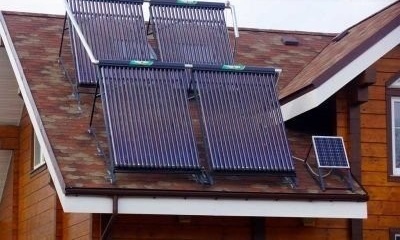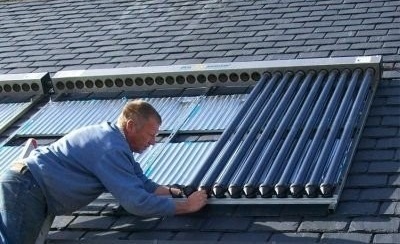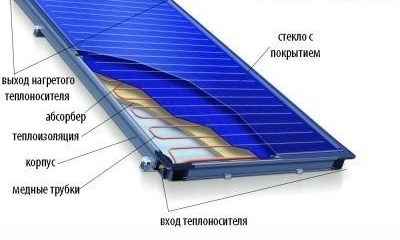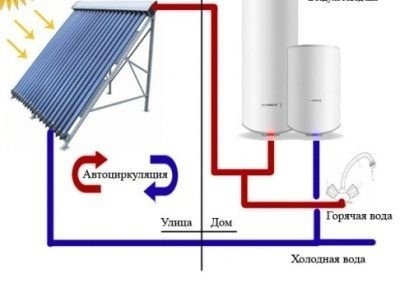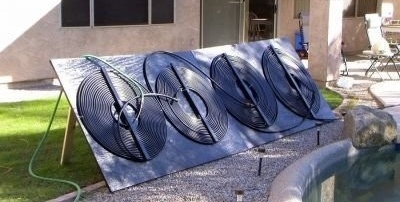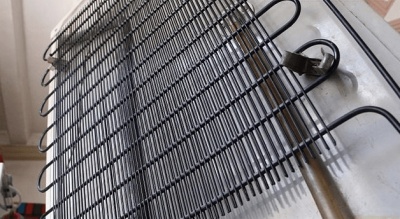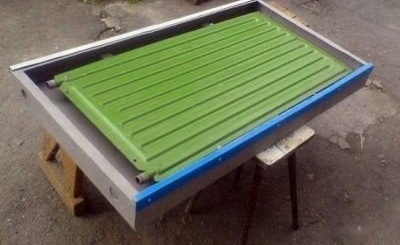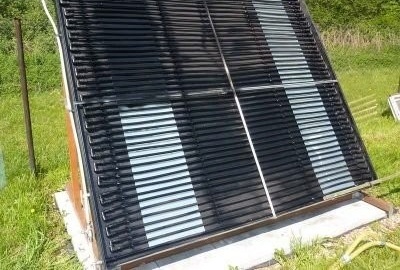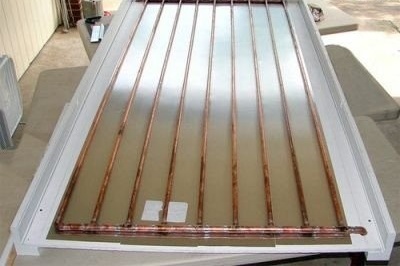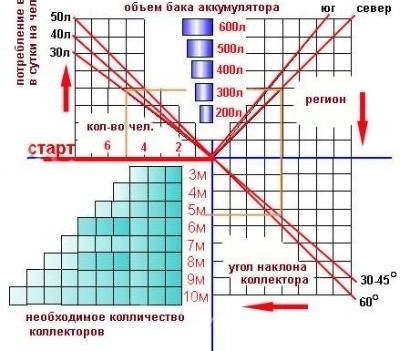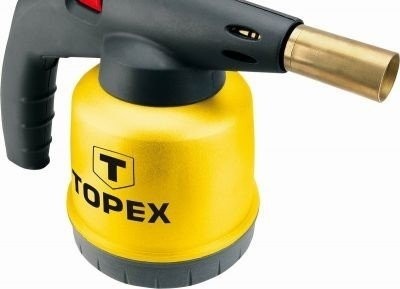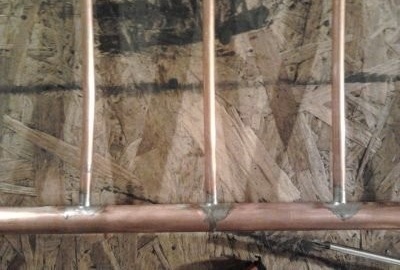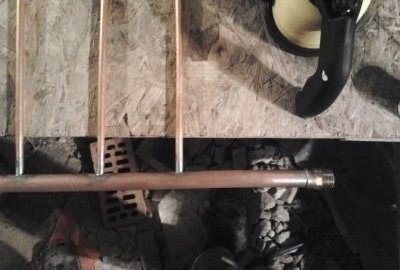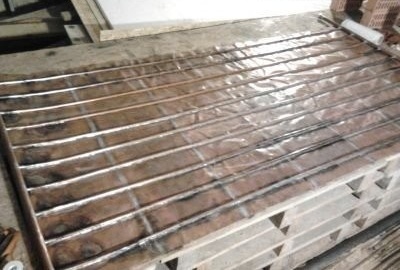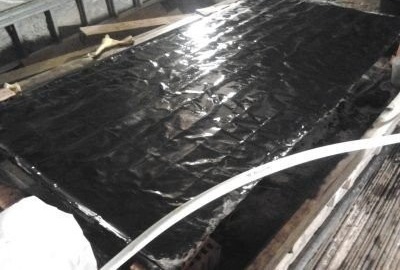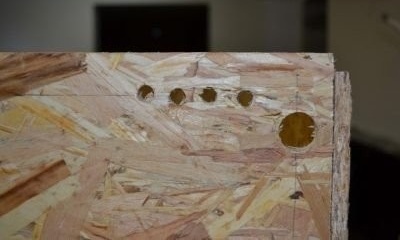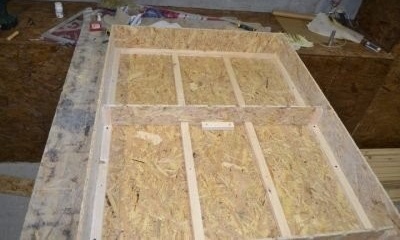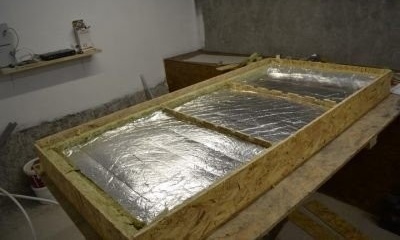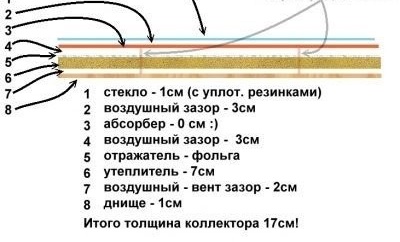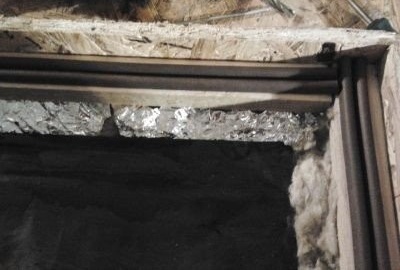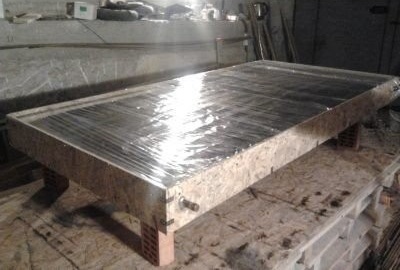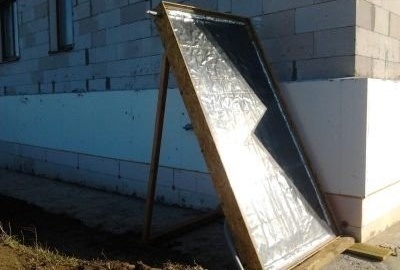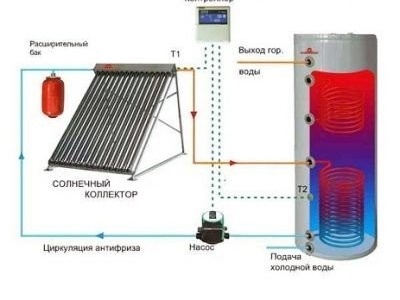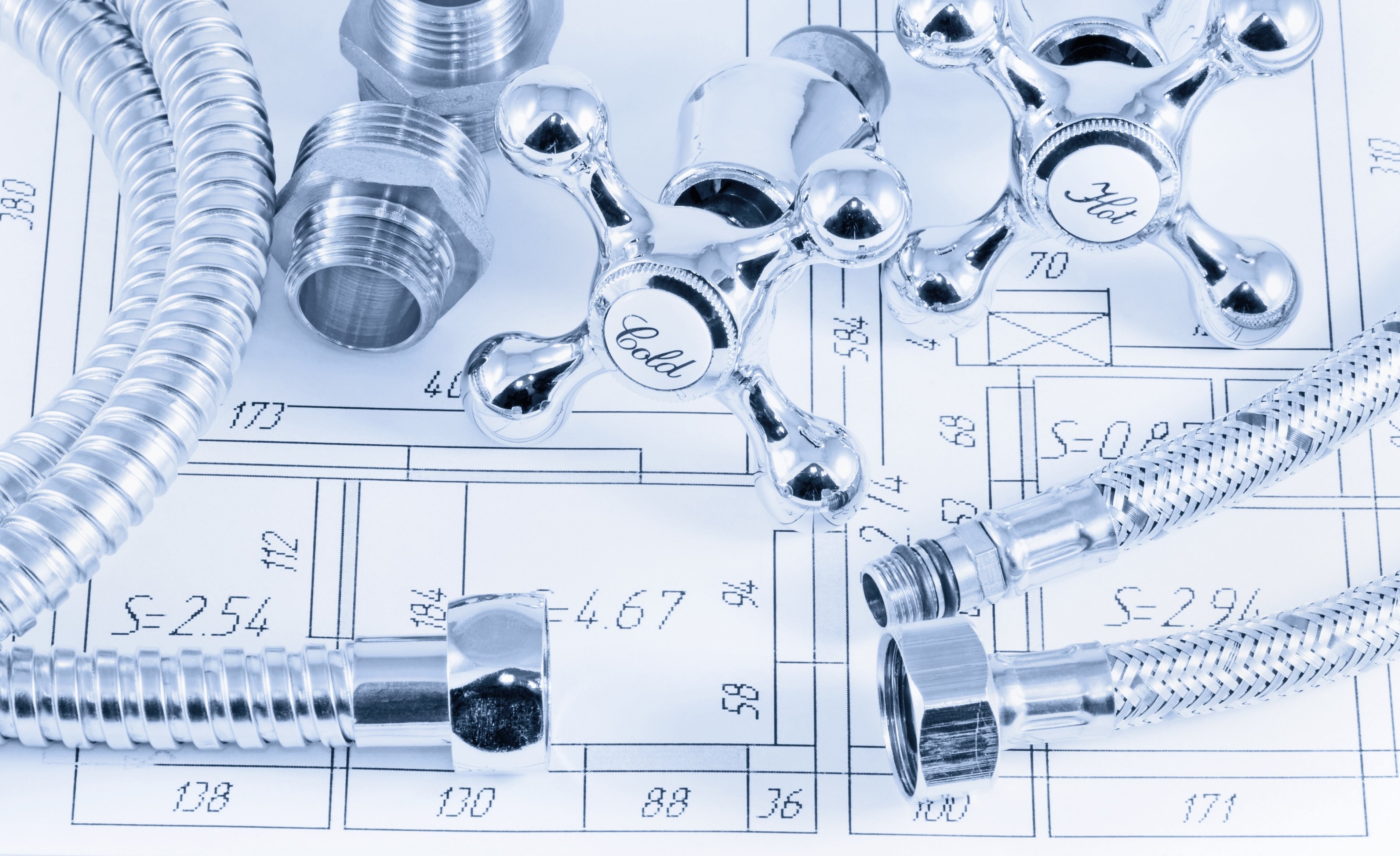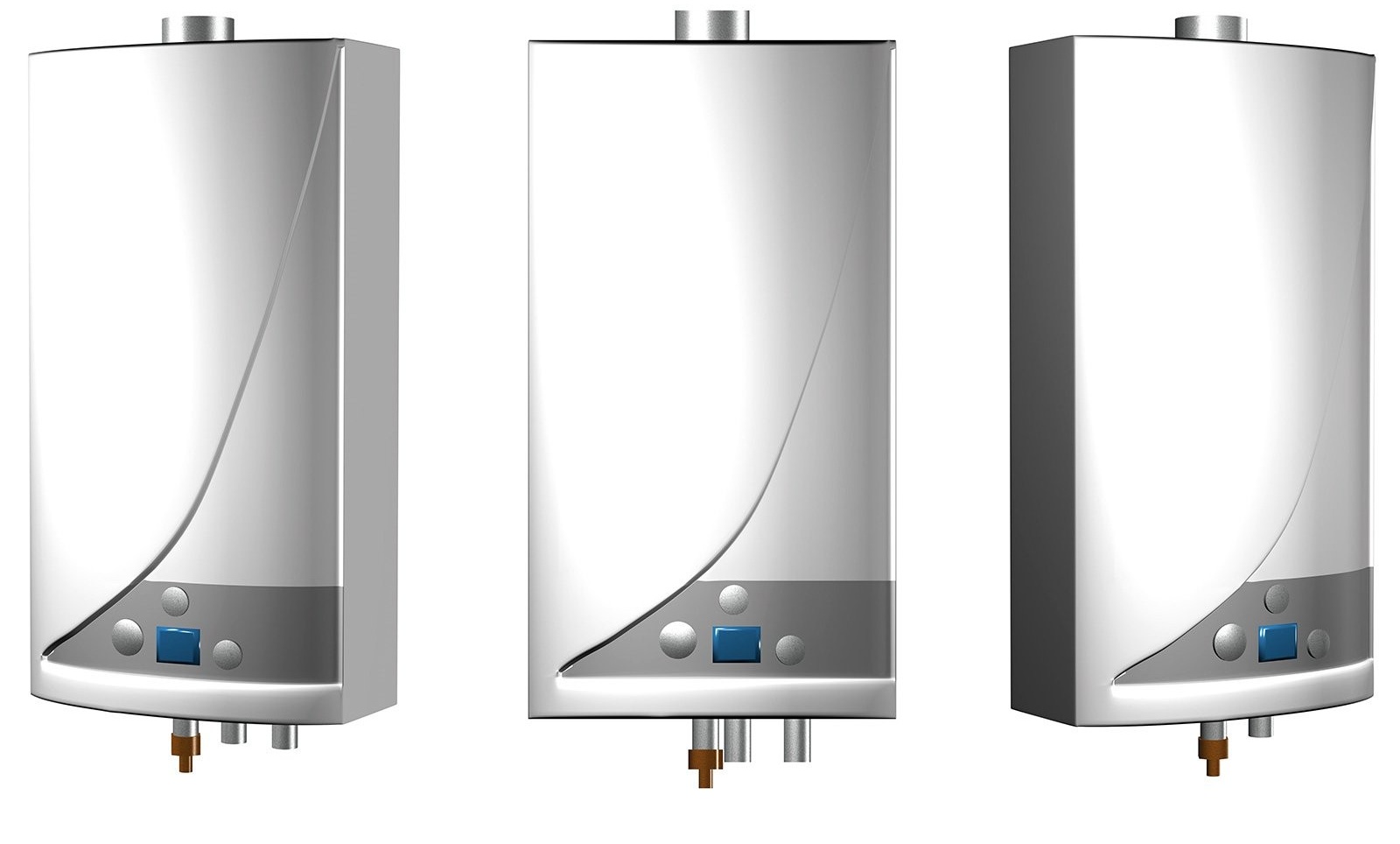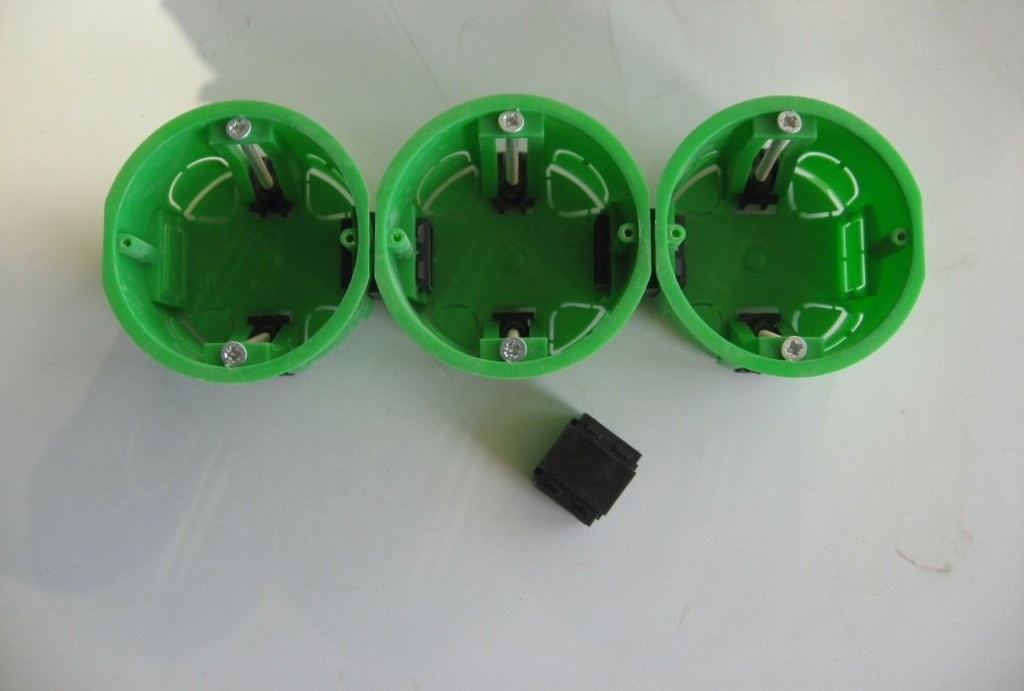Solar water heater: DIY installation
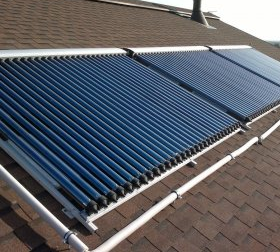
The level of development of modern technologies and materials is so high that not using the energy of the sun is unreasonable from a financial point of view and criminal in relation to the environment. Unfortunately, the purchase of industrial plants for generating electricity and heat is irrational due to their high cost. Nevertheless, there is a solution: to make a productive solar collector with your own hands from materials that can be found in the nearest hardware store.
Content
Purpose of the solar collector, its advantages and disadvantages
A solar water heater (liquid solar collector) is a device that uses the energy of the sun to heat the coolant. It is used for space heating, the organization of hot water supply, water heating in pools, etc.
The prerequisites for using an environmentally friendly water heater is the fact that solar radiation falls on the Earth all year round, although it differs in intensity in winter and summer. So, for mid-latitudes, the daily amount of energy in the cold season reaches 1-3 kW * h per 1 sq. M, while in the period from March to October this value varies from 4 to 8 kW * h / m2. If we talk about the southern regions, then the numbers can safely be increased by 20-40%.
As you can see, the efficiency of the installation depends on the region, but even in the north of our country, the solar collector will provide the need for hot water - the main thing is that there are fewer clouds in the sky. If we talk about the middle lane and the southern regions, then the installation working from the Sun will be able to replace the boiler and cover the needs of the heating medium in the winter. Of course, we are talking about productive water heaters of several tens of square meters.
Save money from the family budget will help the solar battery. To make it yourself will help the following material:https://aquatech.tomathouse.com/en/otoplenie/alt_otoplenie/solnechnaya-batareya-svoimi-rukami.html
Table: Distribution of Solar Energy by Region
| The average daily amount of solar radiation, kW * h / m2 | |||||||||
| Murmansk | Arkhangelsk | St. Petersburg | Moscow | Novosibirsk | Ulan-Ude | Khabarovsk | Rostov-on-Don | Sochi | Find |
| 2,19 | 2,29 | 2,60 | 2,72 | 2,91 | 3,47 | 3,69 | 3,45 | 4,00 | 3,99 |
| The average daily amount of solar radiation in December, kW * h / m2 | |||||||||
| 0 | 0,05 | 0,17 | 0,33 | 0,62 | 0,97 | 1,29 | 1,00 | 1,25 | 2,04 |
| The average daily amount of solar radiation in June, kW * h / m2 | |||||||||
| 5,14 | 5,51 | 5,78 | 5,56 | 5,48 | 5,72 | 5,94 | 5,76 | 6,75 | 5,12 |
Solar collectors built at home can not be compared with factory-made devices, but a home-made solar installation will reduce the cost of heating water for domestic purposes and save electricity when connected to a washing machine and dishwasher.
Advantages of solar water heaters:
- relatively simple design;
- high reliability;
- efficient operation regardless of the season;
- long service life;
- the possibility of saving gas and electricity;
- permission to install equipment is not required;
- light weight;
- ease of installation;
- full autonomy.
As for the negative aspects, not a single installation for producing alternative energy can do without them. In our case, the disadvantages include:
- high cost of factory equipment;
- dependence of the solar collector efficiency on the season and latitude;
- exposure to hail;
- additional costs for the installation of a heat storage tank;
- dependence of the energy efficiency of the device on cloudiness.
Types of solar water heaters: the choice of design for self-manufacturing
Depending on the temperature that the solar heaters develop, distinguish:
- low-temperature devices - designed for heating liquids up to 50 ° C;
- medium temperature solar collectors - increase the temperature of the outlet water to 80 ° C;
- high-temperature installations - heat the coolant to a boiling point.
At home, you can build a solar water heater of the first or second type. For the manufacture of a collector of high temperatures, industrial equipment, new technologies and expensive materials will be needed.
By design, all liquid solar collectors are divided into three types:
- flat water heaters;
- vacuum thermosiphon devices;
- helioconcentrators.
The flat solar collector is a low heat-insulated box. A light-absorbing plate and a tubular contour are installed inside. The absorbing panel (absorber) has an increased thermal conductivity. Due to this, it is possible to achieve maximum transfer of energy to the coolant circulating along the water heater circuit. The simplicity and efficiency of flat plants is reflected in numerous designs developed by craftsmen.
The principle of operation of vacuum solar water heaters is based on the effect of a thermos. The design is based on dozens of double glass flasks. The outer tube is made of impact-resistant, tempered glass that resists degrees and wind. The inner tube has a special coating to increase light absorption. Air is pumped out of the space between the elements of the bulb, which avoids heat loss. In the center of the structure there is a copper thermal circuit filled with a low-boiling coolant (freon) - it is the heater of the vacuum solar collector. In the process, the process fluid evaporates and transfers the heat energy of the process fluid to the main circuit. In this quality antifreeze is more often used. This design ensures system performance at temperatures down to -50 ° C. It is difficult to build such an installation at home, so there are a few homemade vacuum-type structures.
The helioconcentrator basically has a spherical mirror capable of focusing solar radiation to a point. The heating of the liquid takes place in a spiral metal circuit, which is placed in the focus of the installation. The advantage of solar concentrators is the ability to develop high temperature, but the need for a tracking system for the Sun reduces their popularity among homemade manufacturers.
For manufacturing at home, flat solar heaters built using heat-insulating materials, glass with high transmittance and copper absorbers are best suited.
The device and principle of operation of a flat solar collector
Homemade solar water heater consists of a flat wooden frame (box) with a blank back wall. At the bottom is the main element of the device - the absorber. Most often, it is made of a metal sheet attached to a tubular manifold. The efficiency of energy transfer depends on the contact of the absorber plate with the pipes of the heat exchanger, therefore these parts are welded or soldered with a continuous seam.
The liquid circuit itself is an array of vertically mounted tubes. In the upper and lower parts they are connected to horizontal pipes of increased diameter, which are intended for the supply and selection of coolant. The inlet and outlet for the liquid are arranged diagonally - due to this, a complete heat removal from the heat exchanger elements is ensured. Antifreeze for heating systems or other non-freezing solutions are used as a heat carrier.
The absorber is covered with light-absorbing paint, glass is placed on top, and the box is protected with a layer of thermal insulation. To simplify the task, the glazing area is divided into parts, and in order to increase productivity, double-glazed windows are used. The closed design creates a thermos effect in the solar collector and at the same time prevents heat loss due to wind, rain and other external factors.
The sun is a source of energy available to every person. This article will help to equip the solar collector:https://aquatech.tomathouse.com/en/otoplenie/alt_otoplenie/solnechnoe-otoplenie-chastnogo-doma.html
The solar water heater works like this:
- The non-freezing fluid heated in the solar collector rises through the tubes and enters the heat storage tank through the heat transfer branch.
- Moving along the heat exchanger installed inside the storage tank, antifreeze gives off heat to the water.
- The cooled working fluid enters the lower part of the solar water heater circuit.
- The water heated in the tank rises and is withdrawn for the needs of hot water supply. The replenishment of the liquid in the heat storage tank occurs due to the water supply connected to the lower part. If the solar collector works as a heating system heater, then a circulation pump is used to circulate the water in a closed secondary circuit.
The constant movement of the coolant and the presence of a heat accumulator allows you to accumulate energy while the sun is shining, and gradually spend it even when the star is hidden behind the horizon.
Homemade Solar Installation Options
A feature of do-it-yourself solar water heaters is that almost all devices have the same design of a thermally insulated box. Often the frame is assembled from lumber and covered with mineral wool and heat-reflecting film. As for the absorber, metal and plastic pipes are used for its production, as well as ready-made components from unnecessary household equipment.
From a garden hose
A garden hose or a PVC water pipe folded by a snail has a large surface area, which allows you to use a similar circuit as a water heater for the needs of an outdoor shower, kitchen or pool heating. Of course, for these purposes it is better to take black materials and be sure to use the storage tank, otherwise the absorber will overheat in the peak of summer heat.
From the condenser of an old refrigerator
An external heat exchanger of a refrigerator or freezer that has expired is a ready-made absorber of a solar collector. All that remains to be done is to equip it with a heat-absorbing sheet and install it in the housing. Of course, the performance of such a system will be small, but in the warm season, the water heater from the parts of the refrigeration equipment will cover the needs for hot water in a small country house or cottage.
From a flat radiator of the heating system
The manufacture of a solar collector from a steel radiator does not even require the installation of an absorbent plate. It is enough to cover the device with black heat-resistant paint and mount it in a sealed casing. The productivity of one installation is more than enough for a hot water system. If you make several water heaters, you can save on heating the house in cold sunny weather. By the way, a solar installation assembled from radiators will heat utility rooms, a garage or a greenhouse.
From polypropylene or polyethylene pipes
Pipes made of metal-plastic, polyethylene and polypropylene, as well as fittings and devices for their installation, allow you to build the contours of solar systems of any size and configuration. Such plants have good performance and are used to heat rooms and produce hot water for household needs (kitchen, bathroom, etc.).
From copper tubes
Absorbers built from copper plates and tubes have the highest heat transfer, therefore, they are successfully used for heating the heating medium of heating systems and in hot water supply. The disadvantages of copper collectors include the high labor costs and the cost of materials.
Solar Calculation Methodology
The calculation of the performance of the solar solar collector is based on the fact that per 1 sq. M installation on a clear day accounts for 800 to 1 thousand watts of thermal energy. Losses of this heat on the reverse side and walls of the structure are calculated by the coefficient of thermal insulation of the insulation used. If polystyrene foam is used, then the heat loss coefficient for it is 0.05 W / m × ° C. With a material thickness of 10 cm and a temperature difference of 50 ° C inside and outside the structure, the thermal energy loss is 0.05 / 0.1 × 50 = 25 W. Taking into account the side walls and pipes, this value is doubled. Thus, the total amount of outgoing energy will be 50 W per 1 sq. M of the surface of the solar heater.
To heat 1 liter of water per degree, 1.16 W of thermal energy will be required, therefore, for our model of a solar collector with an area of 1 sq. M and a temperature difference of 50 ° C, we will be able to obtain a conditional productivity coefficient of 800 / 1.16 = 689.65 / kg × ° C. This value shows that an installation of 1 square meter will heat 20 liters of water at 35 ° C within an hour.
The calculation of the required productivity of a solar water heater is carried out according to the formula W = Q × V × δT, where Q is the heat capacity of water (1.16 W / kg × ° C); V - volume, l; δT is the temperature difference at the inlet and outlet of the installation.
Statistics say that for one adult, 50 liters of hot water per day are required. On average, for hot water supply it is enough to raise the water temperature by 40 ° C, which, when calculated according to this formula, requires energy consumption W = 1.16 × 50 × 40 = 2.3 kW. To find out the area of the solar collector, this value must be divided by the amount of solar energy per 1 square meter of the surface at a given geographical latitude.
Making a solar water heater with a copper absorber
The solar collector proposed for manufacture on a winter sunny day heats the water to a temperature above 90 ° C, and in cloudy weather - up to 40 ° C. This is enough to provide the house with hot water. If you want to heat the dwelling with solar energy, then several such installations will be required.
Solar energy is ideally suited to operate a pump for pumping water. The nuances of manufacturing such a unit are described here:https://aquatech.tomathouse.com/en/vodosnab/nasos/nasosy-montazh/samodelnyj-nasos-dlya-otkachki-vody.html
Necessary materials and tools
To make a water heater you will need:
- copper sheet with a thickness of at least 0.2 mm in size 0.98 × 2 m;
- copper pipe Ø10 mm, length 20 m;
- Ø22 mm copper tube 2.5 m long;
- 3 / 4˝ thread - 2 pcs;
- 3 / 4˝ plug - 2 pcs;
- soft solder SANHA or POS-40 - 0.5 kg;
- flux;
- chemicals for blackening the absorber;
- OSB plate 10 mm thick;
- furniture corners - 32 pcs;
- 50 mm thick basalt wool;
- sheet heat-reflecting insulation with a thickness of 20 mm;
- rail 20x30 - 10m;
- door or window seal - 6 m;
- window glass with a thickness of 4 mm or double-glazed window 0.98x2.01 m;
- self-tapping screws;
- paint.
In addition, prepare the following tools:
- electric drill;
- a set of drill bits for metal;
- “Crown” or milling cutter for woodwork Ø20 mm;
- pipe cutter;
- gas-burner;
- respirator;
- paint brush;
- screwdriver set or screwdriver;
- electric jigsaw.
To pressure test the circuit, you will also need a compressor and a manometer designed for pressure up to 10 atmospheres.
Instructions for the progress of work
- Using a pipe cutter, a copper tube is cut into pieces. You will get 2 parts Ø22 mm 1.25 m long and 10 elements Ø10 mm 2 m long.
- In thick pipes, indent from the edge of 150 mm and perform 10 drillings of Ø10 mm every 100 mm.
- Thin tubes are inserted into the holes obtained so that they protrude inward by no more than 1-2 mm. Otherwise, excessive hydraulic resistance will appear in the radiator.
- Using a gas burner, hot air gun and solder, all parts of the radiator are interconnected.
To assemble the radiator, you can use special fittings, but in this case, the cost of the solar system will increase significantly. In addition, collapsible joints do not guarantee the tightness of the structure under variable thermodynamic loads.
- Plugs and threads are soldered in pairs to the 3/4 заг pipes along the diagonals of the radiator.
- Having closed the outlet thread with a plug, a fitting is screwed onto the input of the assembled collector and a compressor is connected.
- The radiator is placed in a container with water and a pressure of 7–8 atm is pumped by the compressor. By the bubbles rising at the joints, they judge the tightness of the soldered joints.
If a suitable reservoir for checking the collector could not be found, then you can assemble it with your own hands. To do this, from the improvised means (sawn timber, brick, etc.) make a box or a simple fence and cover it with plastic wrap.
- After checking the tightness, the radiator is dried and degreased. Then proceed to solder the copper sheet. Solder the absorber sheet to the tubes should be a continuous seam along the entire length of each element of the copper circuit.
- Since the solar collector absorber is made of copper, chemical blacking can be used instead of painting.This will allow you to get a real selective coating on the surface, like what is obtained in the factory. For this, a heated chemical solution is poured into the tank for checking the tightness and the absorber is placed face down. During the reaction, the temperature of the reagents is maintained in any way possible (for example, by constantly pumping the solution through a container with a boiler).
As a liquid for chemical blackening, you can use a solution of sodium hydroxide (60 g) and potassium persulfate or ammonium sulphate (16 g) in water (1 l). Remember that these substances are dangerous to humans, and the process of copper oxidation is associated with the release of harmful gases. Therefore, the use of protective equipment - a respirator, glasses and rubber gloves is mandatory, and the work itself is best done outdoors or in a well-ventilated area.
- From the OSB sheet, details are cut out for assembling the solar collector body - the bottom is 1x2 m, the sides are 0.16x2 m, the upper 0.18x1 m and the lower 0.17x1 m of the panel, as well as 2 support walls 0.13x0.98 m.
- A 20 x 30 mm rail is cut into pieces: 1.94 m - 4 pcs. and 0.98 m - 2 pcs.
- In the side walls, holes Ø20 mm are made for the inlet and outlet pipes, and 3-4 holes Ø8 mm for microventilation are performed in the lower part of the collector.
- In the partitions, cuts are made under the absorber tubes.
- A support frame is assembled from 20x30 mm rails.
- Using furniture corners and self-tapping screws, the frame is sheathed with OSB panels. In this case, the side walls must rest on the bottom - this will prevent the body from deflecting. The lower panel is lowered 10 mm from the rest to cover it with glass. This will prevent precipitation from entering the frame.
- Install internal partitions.
- The bottom and sides of the body are insulated with mineral wool and covered with a roll of heat-reflecting material.
- The absorber is placed on the prepared space. To do this, dismantle one of the side panels, which are then put in place.
- At a distance of 1 cm from the upper edge of the box, the inner perimeter of the structure is sheathed with a 20x30 mm wooden strip so that its wide side touches the walls.
- Around the perimeter glued sealing gum.
- They place glass or a double-glazed window, the contour of which is also pasted over with a window seal.
- The structure is pressed with an aluminum corner, in which holes for self-tapping screws are pre-drilled. At this stage, the assembly of the collector is considered complete.
To prevent moisture and heat leakage, at all stages, the joints and junctions of the parts are treated with silicone sealant. To protect the structure from precipitation, the wood is coated with a special composition and painted with enamel.
Features of installation and operation of liquid heating manifolds
To place the solar collector, a spacious place is chosen that does not obscure the entire daylight hours. The mounting bracket or subframe is made of wooden battens or metal in such a way that the tilt of the water heater is adjustable from 45 to 60 degrees from the vertical axis.
Connection to indirect heating boiler or heat accumulator is performed using threaded fittings and copper, metal-plastic or multilayer polypropylene pipes. They are covered with a layer of thermal insulation.
An accumulation tank is placed as close to the installation as possible to reduce heat loss. Depending on the conditions, natural or forced circulation of the coolant is organized. In the latter case, a controller is used with a temperature sensor embedded in the outlet pipe. The pumping of the working fluid along the circuit will turn on when its temperature reaches the programmed value.
A seasonally-operating system is charged with water, while year-round use of a solar water heater requires the use of non-freezing liquid. An ideal option is a special antifreeze for solar systems, but liquids intended for automobile radiators or domestic heating systems are also used to save.
Video: do-it-yourself solar water heater
Building a solar collector is not only an interesting and exciting activity. A solar water heater will save your family budget and will prove that it is possible to protect the environment not only in words, but also in real deeds.
